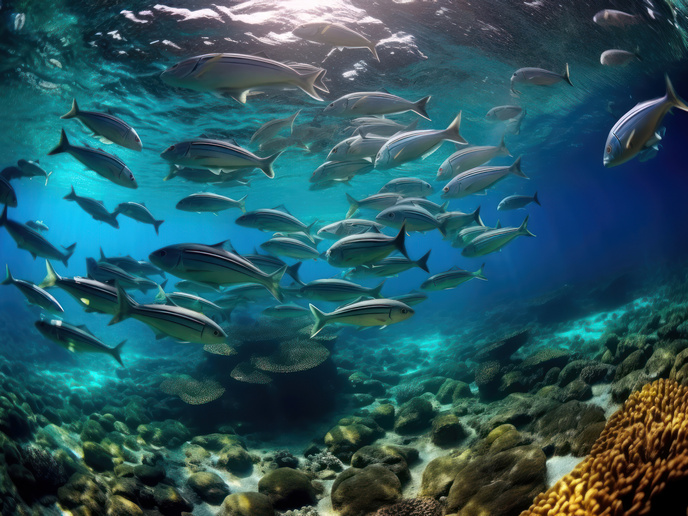Engaging the community in marine biodiversity research
The global decline of marine biodiversity is weakening the ocean’s ability to provide food, withstand disturbances and regulate our climate. In Spain, a citizen science event known as the BioMARathon is addressing this loss by involving the public in a large collaborative effort to monitor Catalonia’s marine and coastal biodiversity. The third edition of the BioMARathon took place along the Catalan coast in the summer of 2023. Supported by the EU-funded ANERIS(opens in new window), MINKE(opens in new window), ECS(opens in new window) and GUARDEN(opens in new window) projects, the BioMARathon sought to empower locals, gather extensive biodiversity data, and increase community engagement in the research and protection of marine biodiversity and habitats. This BioMARathon was the most successful to date, with more than 300 volunteers collecting over 60 000 observations of marine life along the Catalan coast – a figure three times bigger than in the previous year. The observations made between May and October 2023 included 34 invasive species and 40 protected species. They also included the unprecedented presence of the West African fiddler crab (Afruca tangeri), previously only seen near the Strait of Gibraltar and now spotted on the Catalan coast for the first time.
Protected and invasive species
Among the 40 protected species recorded were the undulate skate (Raja undulata) and the spinetail devil ray (Mobula mobular), classed as endangered on the International Union for Conservation of Nature’s Red List of Threatened Species(opens in new window). Other protected species included red coral (Corallium rubrum) and several protected seagrasses that play “a crucial role in ecosystem formation, erosion prevention and storage of carbon dioxide,” as a recent ‘EurekAlert!’ news release(opens in new window) reports. Invasive species identified were the green alga Caulerpa cylindracea, which is gradually spreading to new areas, and the red alga Asparagopsis taxiformis, usually found in the southern peninsular coast but appearing along the Catalan coast in 2023. “Experts suggest both could pose a threat to native species by competing for space and resources,” reports a news item(opens in new window) posted on the website of the Institut de Ciències del Mar, a research institute of ANERIS and MINKE project coordinator and ECS and GUARDEN project partner Spanish National Research Council. The images captured of each species, with corresponding geolocation and validated species identification, have been published on the MINKA citizen science platform(opens in new window). “Over the last three years, BioMARathon observations have catalogued a total of 1900 marine species along the Catalan coast, creating one of Catalonia’s most extensive marine biodiversity databases thanks to the dedication of the public. In 2023 alone, 1440 species were recorded.” This achievement highlights the important role that citizen science plays in furthering research and knowledge. The results of the BioMARathon co-funded by ANERIS (operAtional seNsing lifE technologies for maRIne ecosystemS), MINKE (Metrology for Integrated Marine Management and Knowledge-Transfer Network), ECS (European Citizen Science), and GUARDEN ( safeGUARDing biodivErsity aNd critical ecosystem services across sectors and scales) were presented in an online event on 30 November 2023. For more information, please see: ANERIS project website(opens in new window) MINKE project website(opens in new window) ECS project website(opens in new window) GUARDEN project website(opens in new window)



